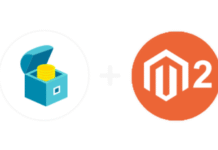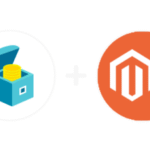Last Updated on July 23, 2024 by Asfa Rasheed
Table of Contents
Meet one of the top minds exploring the future of data intelligence and advanced analytics.
Data analytics is an intricate sector, which encompasses the collection, processing, and analysis of large volumes of data to extract meaningful insights that inform decision-making processes. It involves various techniques such as statistical analysis, machine learning, data mining, and visualization to interpret complex data sets. This field requires a deep understanding of both the underlying data and the business context to transform raw information into actionable intelligence that can provide strategic initiatives and operational efficiencies across industries.
One of this arena’s key players is Vinayak Pillai, a senior data analyst based in the Dallas Fort-Worth Metroplex, Texas. He’s made major contributions to data-driven decision-making processes for major clients in industries such as consumer electronics, automotive and services, retailer, and more. He’s a top professional to watch in the tech sector, and he agreed to share insights into his industry.
Interviewer: Vinayak, could you provide a brief overview of your career and what initially drew you to the field of data analytics?
Vinayak Pillai: My work in data analytics began with a strong academic foundation in Information Technology at the University of Mumbai, which I further enriched with a Master of Science in Information Systems from the University of Texas at Arlington. The sheer potential of data to unlock insights and offer strategic decision-making fascinated me. Over the years, I’ve had the opportunity to work with diverse organizations, where I’ve developed and implemented data-centric solutions that have improved their decision-making capabilities.
Interviewer: Explainable AI (XAI) is a critical area of interest in data analytics. Could you explain its importance and how it is transforming the industry?
Vinayak: Explainable AI is crucial because it addresses the need for transparency in AI decision-making processes. Traditional AI models, particularly deep learning models, often operate as black boxes, making it challenging to understand how they arrive at specific decisions. XAI aims to make these models more interpretable and their decisions more understandable to humans. This transparency is essential for building trust in AI systems and for ensuring accountability, particularly in sectors like healthcare and finance where decisions can have major impacts. Making AI models more explainable lets us improve their reliability and facilitate their integration into critical decision-making processes.
Interviewer: Could you explain the applications of XAI (Explainable AI)?
Vinayak: One of the applications is in finance. For credit scoring and loan approval, XAI provides transparency in credit scoring models, helping financial institutions and customers understand how financial decisions and outcomes are determined. It can also be used for fraud detection for enhanced security. XAI offers insights into potential causes of detected fraud, aiding in the investigation of suspicious activities.
Another application is healthcare, specifically AI-assisted diagnoses. XAI helps healthcare professionals understand the primary factors behind AI-assisted diagnoses, leading to more informed medical decisions. Then there’s the interpretation of medical data; XAI aids medical professionals in interpreting complex medical data, improving accuracy and fostering advancements in the medical field.
Interviewer: Your work emphasizes data-centric decision-making. How do you implement this approach, and what benefits does it bring to organizations?
Vinayak: Data-centric decision-making involves using accurate and relevant data to influence business decisions. This approach requires robust data collection, thorough data cleaning, and advanced analytical techniques to extract actionable insights. One of the primary benefits is that it allows organizations to make informed decisions based on empirical evidence rather than intuition. For instance, for major automobile and services clients, I designed efficient procedures and dashboards that analyzed data to showcase business ROI. This improved the accuracy of decision-making and helped in proactively addressing potential issues by forecasting future trends and outcomes.
Interviewer: Quantum computing is another area of your expertise. Can you discuss its potential impact on data mining and AI?
Vinayak: Quantum computing holds immense potential for revolutionizing data mining and AI due to its ability to handle massive datasets and perform complex computations at unprecedented speeds. Traditional computing methods struggle with the scalability required for analyzing large volumes of data and training extensive AI models. Quantum computing can overcome these limitations by utilizing quantum bits, or qubits, which can exist in multiple states simultaneously. This enables the processing of a vast amount of information in parallel. For instance, quantum algorithms like Grover’s algorithm can certainly speed up database searches, while Shor’s algorithm offers exponential improvements in factoring large numbers, which is crucial for cryptography. In the context of AI, quantum computing can enhance the performance of machine learning models, making them more efficient and effective in pattern recognition, predictive analytics, and decision-making.
Interviewer: Data engineering is fraught with challenges. What are some of the key issues you encounter, and how do you address them?
Vinayak: One of the primary challenges in data engineering is prioritizing data quality and integrity throughout the data pipeline. This involves dealing with incomplete or inconsistent data, which can notably affect the accuracy of the insights derived. To address this, I implement rigorous data validation and cleaning processes. Another challenge is the integration of data from diverse sources, each with its own format and structure. This requires robust data mapping and transformation techniques for seamless integration. Additionally, managing the scalability of data infrastructure is critical, especially with the exponential growth of data. Leveraging cloud-based solutions and distributed computing frameworks like Hadoop and Spark helps manage this scalability effectively.
Interviewer: What future trends do you foresee in the field of data analytics and AI?
Vinayak: The future of data analytics and AI is incredibly promising, with several key trends on the horizon. One key trend is the increasing integration of AI and machine learning into everyday business processes, making advanced analytics more accessible and actionable for organizations of all sizes. Another trend is the rise of edge computing, which allows data processing to occur closer to the data source, reducing latency and improving real-time analytics capabilities. Additionally, the ongoing development of quantum computing will further improve data processing capabilities, enabling the analysis of even larger datasets with greater efficiency. Ethical considerations and data privacy will also become increasingly important, necessitating robust frameworks to ensure responsible use of data and AI technologies.
Interviewer: Vinayak, thank you for sharing your insights with us. As we conclude, what advice would you give to aspiring data analysts and those looking to enter the field?
Vinayak: My advice to aspiring data analysts is to remain curious and continuously seek to expand your knowledge. The field of data analytics is dynamic and rapidly evolving, so staying up-to-date with the latest technologies and methodologies is crucial. Develop a strong foundation in statistical analysis and programming, and gain practical experience through projects and internships. Most importantly, cultivate a problem-solving mindset and focus on understanding the business context of the data you work with. This will let you derive meaningful insights and drive impactful decisions.
Apart from this, if you are interested to know more about Transformative Trends: The Future of Coil-Winding Technology then visit our Technology category.



























